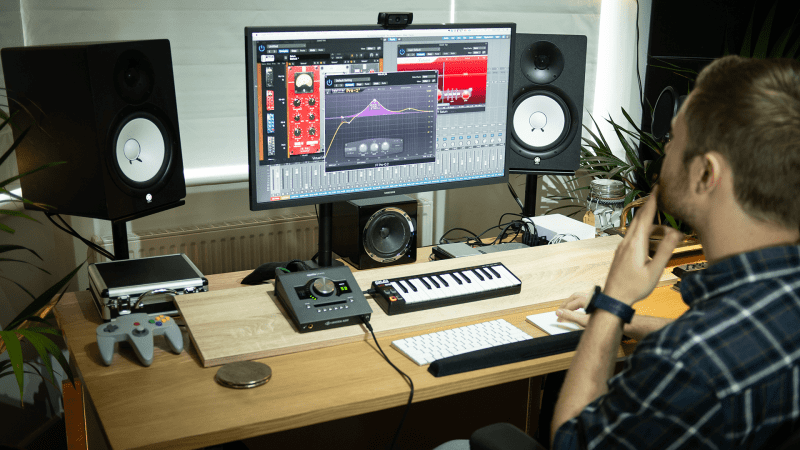What Should you Consider When Choosing Recording Studio Equipment?
Setting up a home studio is a significant decision, so it's important to think about key factors before diving in. Considering these points will help you determine the right equipment for your needs.
- Budget-Friendly
The first consideration is your budget. Whether you have a large or modest amount to spend, it’s crucial to plan how you'll allocate it. Even if you're just starting, you might be thinking ahead and willing to invest more from the outset.
Another aspect tied to your budget is getting good value for your money. Whether you’re purchasing a simple accessory or a high-end microphone, it's important to assess the quality and value each item offers.
- Understanding What’s Essential and What’s Not
It's crucial to distinguish between essential equipment and items that are just nice to have. A basic recording setup can be surprisingly minimal, typically requiring just a microphone, headphones, a computer, and recording software. This distinction becomes even more important when you're working within a tight budget, ensuring you focus on what truly matter.
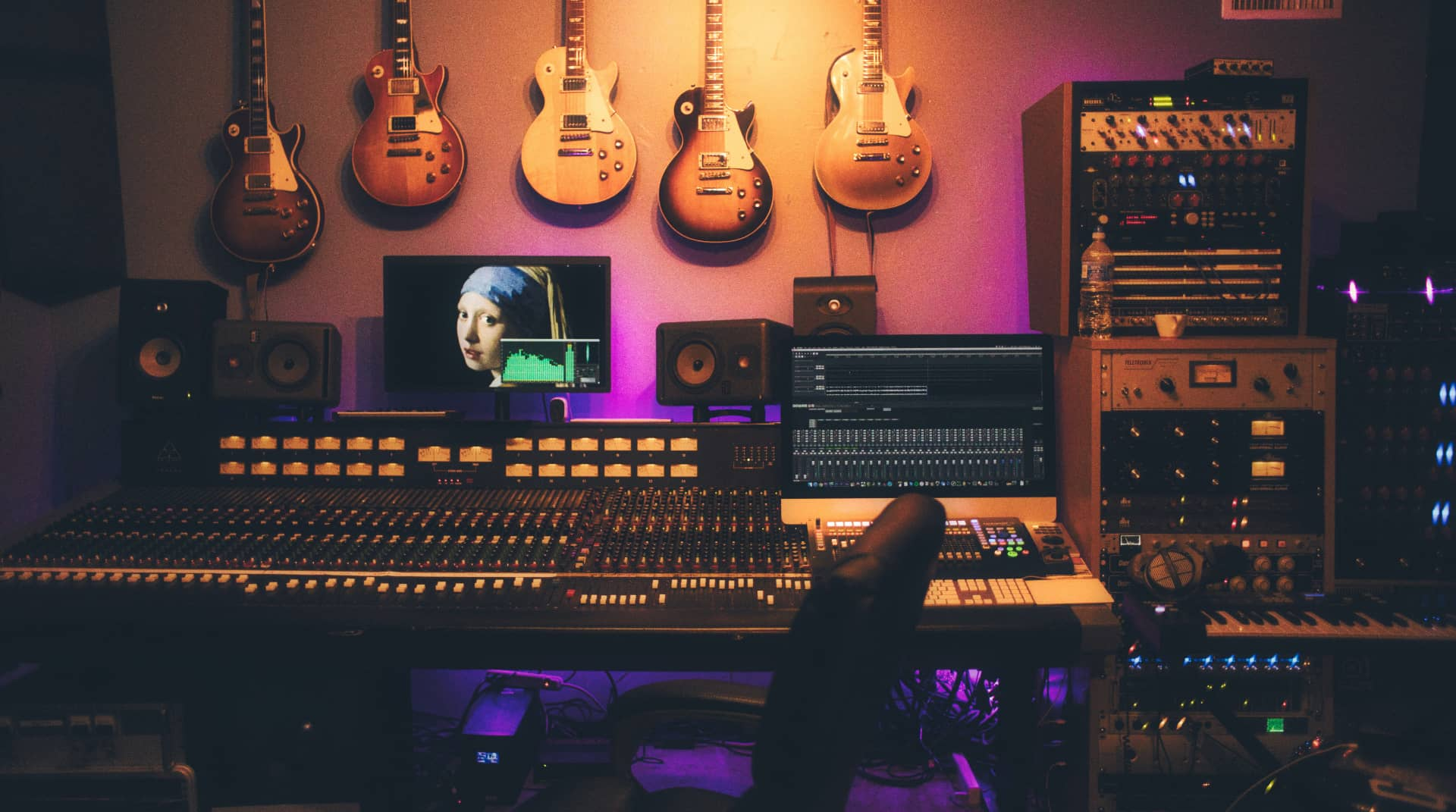
Ref: https://www.1500soundacademy.com/blogs/article/the-right-home-music-studio-equipment
- Type of Content
The type of content you're creating is a key consideration when setting up your studio. For instance, if you're producing in-studio, audio-based podcasts, you'll need to focus on acquiring high-quality microphones and soundproofing to ensure clear audio.
- Compatibility
Compatibility is a crucial consideration when building your studio setup. It's important to ensure that all your equipment works seamlessly together.
Beyond that, think about how new gear will integrate with your existing setup. For example, check if your computer has the necessary ports for any new devices you plan to add. Prioritizing compatibility helps you avoid unnecessary complications and ensures a smoother workflow.
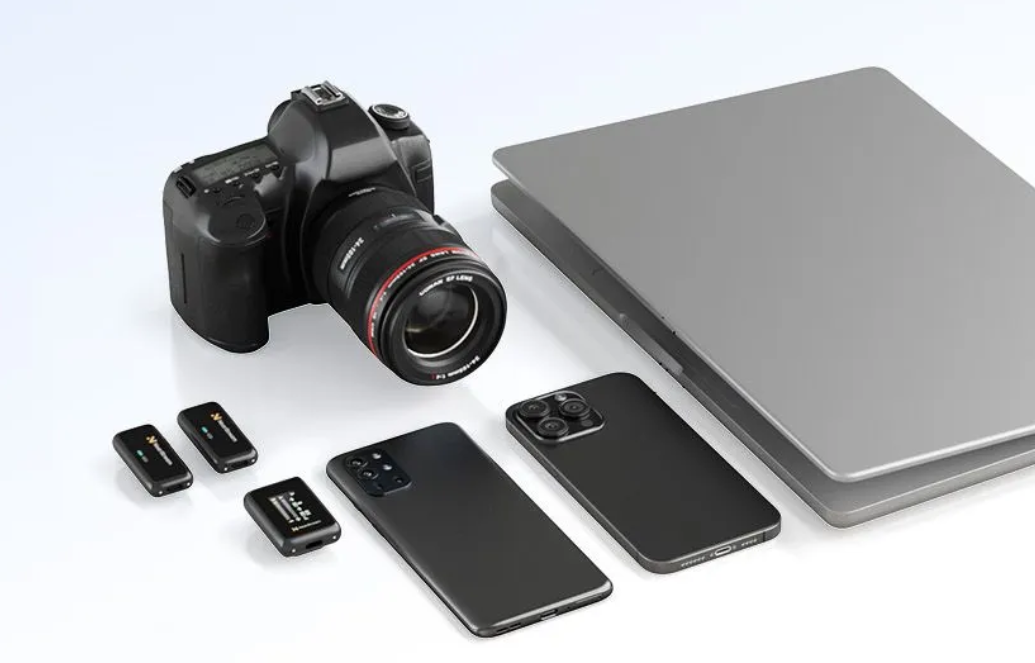
Ref: https://nearstream.us/awm20t
Best Home Recording Studio Equipment Essentials
Knowing how to use your gear is crucial for great recordings. With today’s technology, you can achieve professional results on a budget. We’ve selected key essentials for setting up your home studio.
- Computer
A computer is essential for any recording setup, handling tasks such as recording, connecting with remote guests, editing, and publishing your content. If you already own a laptop or computer, it should suffice for your needs, and you may not need an upgrade. However, if you're in the market for a new one, consider the Apple MacBook Pro for high performance.
- Digital Audio Workstation
Choosing the right Digital Audio Workstation (DAW) is essential for your home recording studio, as it serves as the core of your audio production process. A DAW allows you to record, edit, mix, and master your tracks efficiently. Popular choices include Ableton Live for its intuitive interface and live performance features, Logic Pro X for its extensive library of sounds and plugins.

Ref: https://www.careersinmusic.com/digital-audio-workstation/
- Microphone
A microphone is an indispensable part of any home studio setup. It plays a crucial role in capturing high-quality audio and ensuring that your recordings are clear and professional. Relying on your computer’s built-in microphone often results in lower sound quality, which can hinder your overall recording experience. An external mic allows you to achieve the depth and clarity needed for professional-sounding recordings, making it a must-have for any serious home studio.
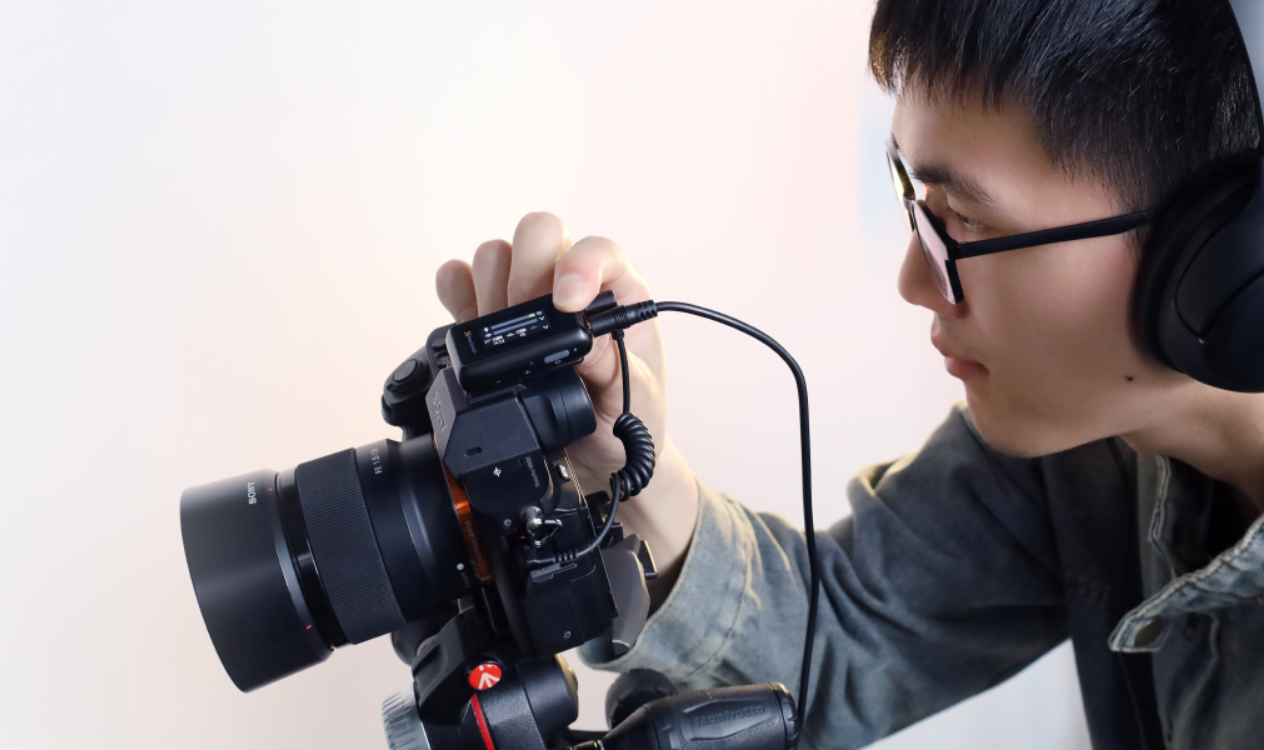
For instance, the NearStream AWM20T is a solid option. This wireless lapel mic is compatible with smartphones, cameras, tablets, and PCs, making it quite versatile. With its noise-canceling feature to reduce background noise and a straightforward setup for easy use, this mic ensures good sound quality for your home recording studio.
- Headphone
Headphones might seem like an extra expense, but they are essential for recording and editing. A high-quality pair helps you accurately monitor audio levels, reduce echo and bleed, and gain better control during post-production.
Look for headphones that offer comfort, as you'll wear them for extended periods. For example, the Audio-Technica ATH-M50x stands out for its sound quality and comfort.
- Interface
An audio interface, or soundboard, translates audio into a format your computer can understand. Not every setup requires one; for example, a USB mic doesn't need an audio interface, but an XLR mic does.
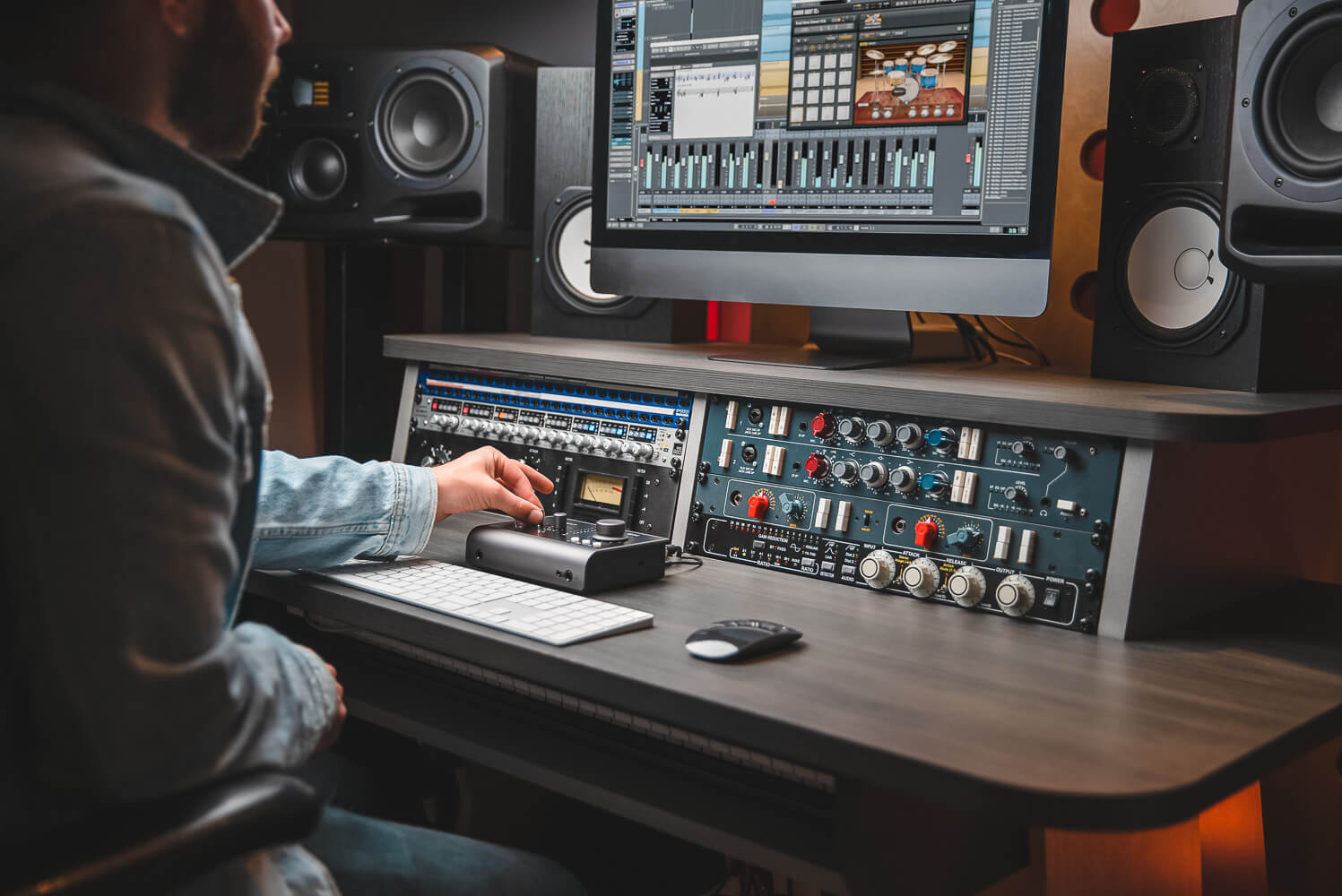
Ref:https://audient.com/tutorial/what-is-an-audio-interface/
When selecting an audio interface, consider the number of inputs to match your needs, the output type to ensure compatibility with your computer, and the sound quality. Check the dynamic range and frequency response to ensure it meets your recording standards.
- Camera
If you're planning to create video content, investing in an external camera is essential. Unlike built-in webcams, external cameras offer superior image quality and flexibility, crucial for professional-looking videos.
Don’t underestimate the advantages of using more than one camera. Multiple cameras allow you to capture different angles and perspectives, enhancing the dynamic quality of your videos.
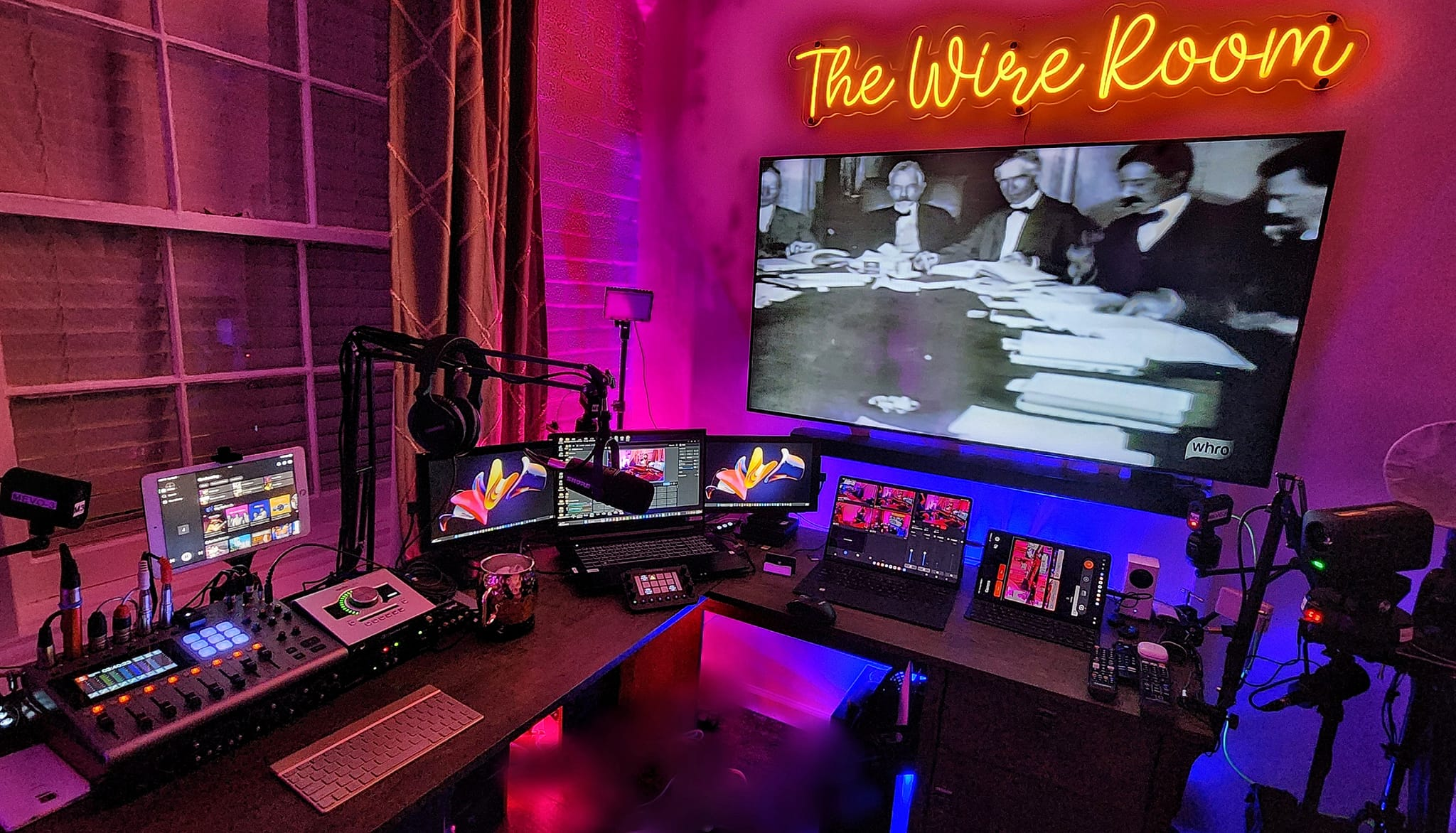
For those seeking video quality and versatility, the NearStream VM33 is an solid choice. With multi-cam support, you can link up to three VM33 cameras with 1080P resolution in streaming, allowing for efficient and high-quality streams or recordings from various angles.
- Accessories
Accessories are crucial for enhancing your recording setup. Essential accessories include a pop filter to reduce plosive sounds, a shock mount to minimize vibrations, and a boom arm to position your microphone comfortably.
How to Build a Home Recording Studio
We’ve outlined key steps for setting up your home recording studio. From selecting essential equipment to optimizing your space, these tips will help you create a professional-quality setup on a budget.
- Arranging Your Space
The first step in building a budget-friendly home recording studio is choosing the right room. Aim for a quiet space, away from street noise and household foot traffic. Room size matters—too large and you’ll struggle with echoes; too small and the sound may feel confined. A medium-sized room often strikes the perfect balance.
Before worrying about expenses, remember there are many DIY solutions to improve acoustics. Simple materials like thick curtains, rugs, and bookshelves filled with books can absorb sound effectively, enhancing your recording environment without breaking the bank.
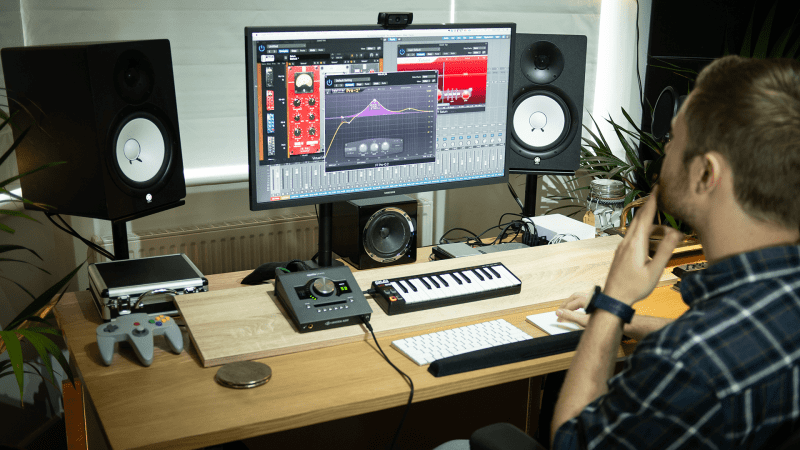
Ref: https://mastering.com/home-studio-setup/
- Equipping Yourself with Essentials
You don’t need a lot of equipment to create high-quality recordings. Start with the basics: a reliable computer, a quality microphone, headphones, and an audio interface. Investing in a good microphone and audio interface first will significantly impact your sound quality. Look for budget-friendly brands that offer excellent performance without sacrificing quality.
Focus on acquiring high-quality essentials and be strategic about your purchases. Watch for second-hand deals and seek advice from experienced creators to make informed decisions. Their insights can help you invest wisely, ensuring your budget goes further while enhancing your recording setup.
- Optimizing Your Recording Environment
Effective soundproofing doesn't have to be costly. Simple solutions can make a big difference, such as sealing door gaps with draft stoppers, hanging heavy blankets on walls, and using rugs on hard floors. These methods help absorb sound and reduce external noise, enhancing the clarity and professionalism of your recordings.
- Setting up Recording Software
Your DAW is essential for recording, editing, mixing, and mastering your audio tracks. Luckily, there are many free or low-cost DAWs that work well for both beginners and pros. Plugins add extra features to your DAW, like effects and virtual instruments. While high-end plugins can be pricey, plenty of free ones can enhance your recordings.

Ref: https://legacy.presonus.com/learn/technical-articles/How-To-Set-Up-a-Home-Recording-Studio
- Testing and Adjusting
Once your home studio is set up, testing your equipment is crucial. Record some test audio to check for any issues with sound quality, such as unwanted noise or distortion. Experiment with different settings on your DAW and plugins to see what works best for your recording style.
After testing, make necessary adjustments to improve your setup. Tweak your equipment placement, adjust your soundproofing materials, and refine your DAW settings.
Conclusion
Setting up a budget-friendly home recording studio is a rewarding challenge that requires creativity and patience. Our guide helps you build an effective studio that delivers high-quality audio without breaking the bank—maximizing your resources to bring your artistic vision to life.
NearStream VM33 - 2K HD Wireless Streaming Camera is an all-in-one wireless live streaming multicam with an optical lens, perfect for streamers seeking a second camera or for recording entire church, wedding, sports, conference, online meetings, or any live events. If you want higher quality, you can choose NearStream VM46 with a 4K resolution.




